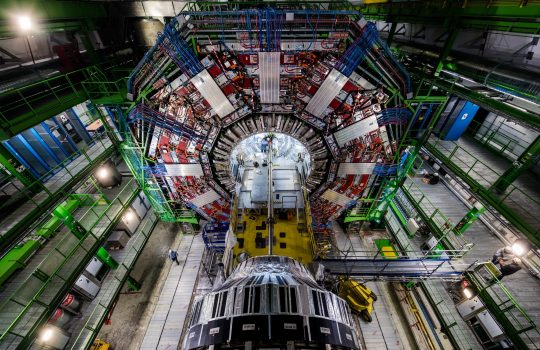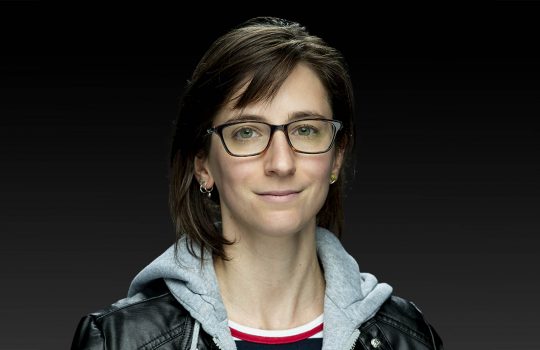Nhan Tran has dedicated the past five years of his postdoctoral research at Fermilab to devise and develop new methods and tools to analyze CMS data. His novel approaches and leadership have earned him the 2017 URA Alvin Tollestrup Award for Outstanding Postdoctoral Research.
“Tran had very tough competition this year,” said Michael Mulhearn, chair of the award committee and associate professor at the University of California, Davis. “But, in the end, the impact of his contributions to the community made him unbeatable.”
Each year the Universities Research Association awards the Tollestrup Award to a postdoctoral researcher who conducted outstanding work in collaboration with Fermilab scientists. Tran will be recognized at the Fermilab Users Meeting on June 8 “for his creative leadership within the CMS experiment, including the development of new tools for pile-up mitigation and jet substructure reconstruction.”
The CMS experiment is one of two general-purpose experiments at CERN’s Large Hadron Collider in Switzerland, and hundreds of U.S. scientists collaborate on the experiment through Fermilab.
Nearly light-speed particle beams are brought to collide inside the giant CMS detector, and the traces particles leave are studied to look for new physics.
”If you think of creative and widely used ideas that have allowed analyses to flourish under high-intensity and high-energy beam conditions, two spring to mind: jet substructure reconstruction and pile-up mitigation,” Mulhearn said. “Tran played a leading role in realizing both at CMS.”
Scientists rely on the processes to identify the components of the postcollision debris in CMS.
Tran’s approach to these two major challenges was to see them as two sides of the same coin. Both share the same root: the postcollision energy traces. Scientists refer to them as jets or jet structures. These jets are like particle fingerprints. Scientists can use their structures to identify the newly formed particles.
“Currently over 40 events happen during just one collision,” Tran said. “We need to sort them: We discard well-known ones and search for new and rare ones. I see this as one challenge and not as two.”
To find so far unknown particles, Tran and his colleagues develop new jet structure reconstruction tools to isolate jets of possible new particles and to separate these from well-known jet structures. Before this can happen, the jet structures need to be cleaned up, so Tran created pile-up mitigation tools to do this. These sets of tools are now widely used among the CMS collaboration to analyze the data.
“I am very excited and grateful to receive this award,” Tran said. “But the true reason and the true appreciation for our work — and this was really a team effort — is the fact that other people want to use our tools and are adopting them for their own analysis.”
Tran and his colleagues built these tools using feedback and more ideas coming from the whole collaboration. Currently, a large fraction of his collaboration is already using the tools, and Tran hopes that more will follow in the future.
“We are delighted to give this award to Nhan Tran to recognize his outstanding and path-breaking work,” said URA Executive Director Marta Cehelsky.




